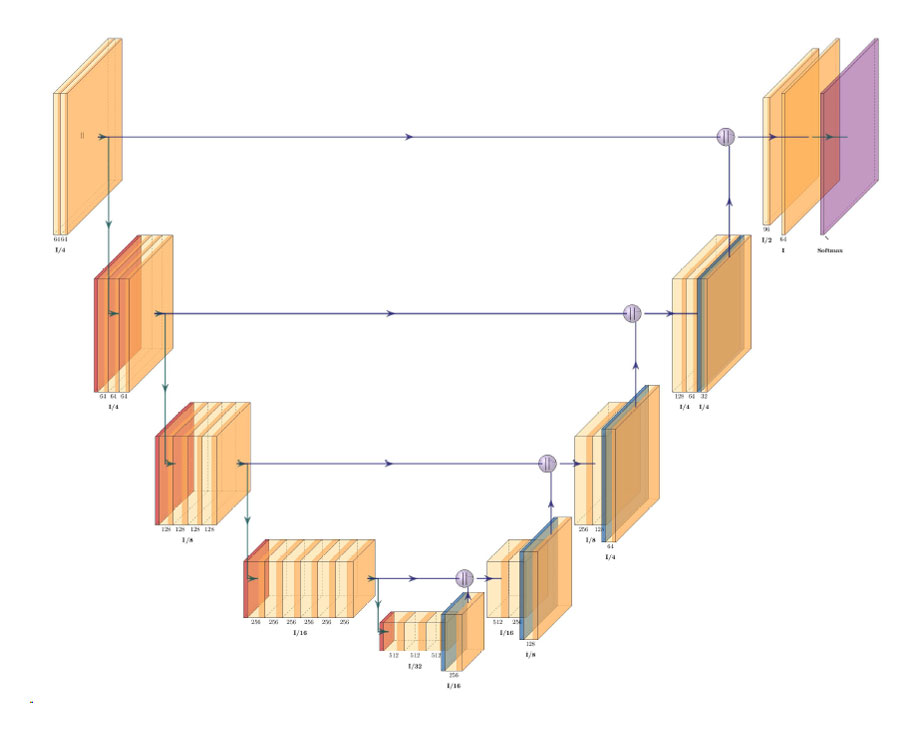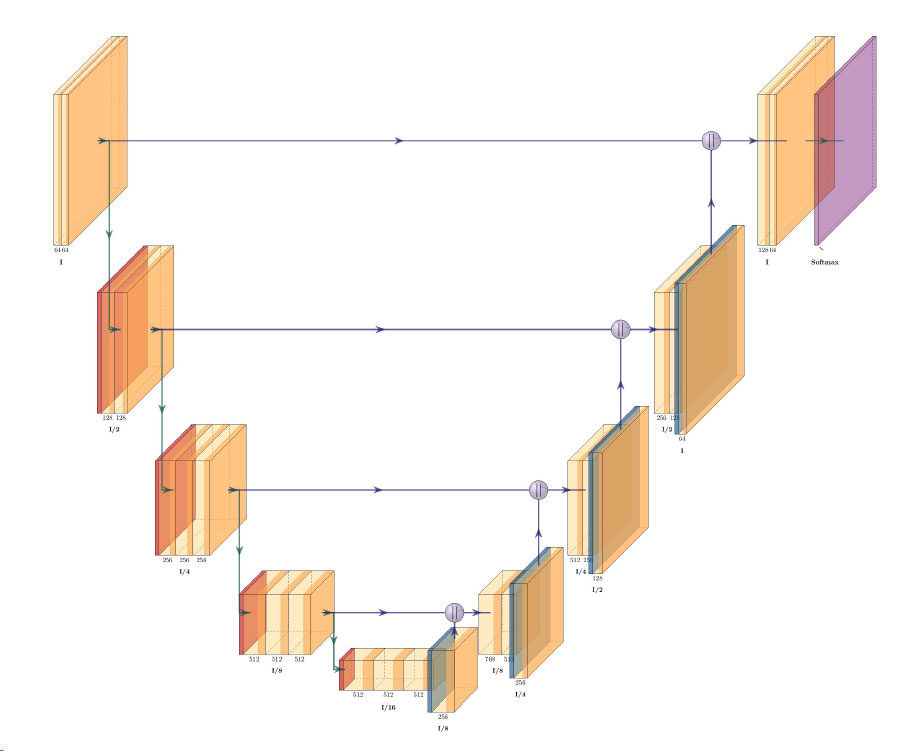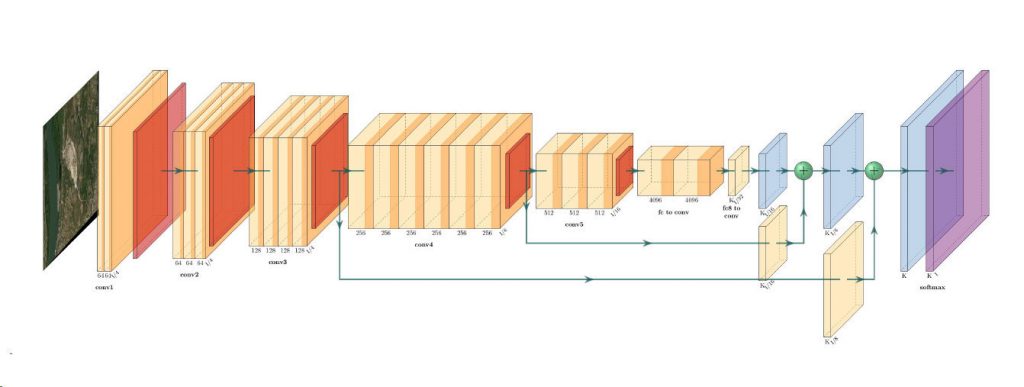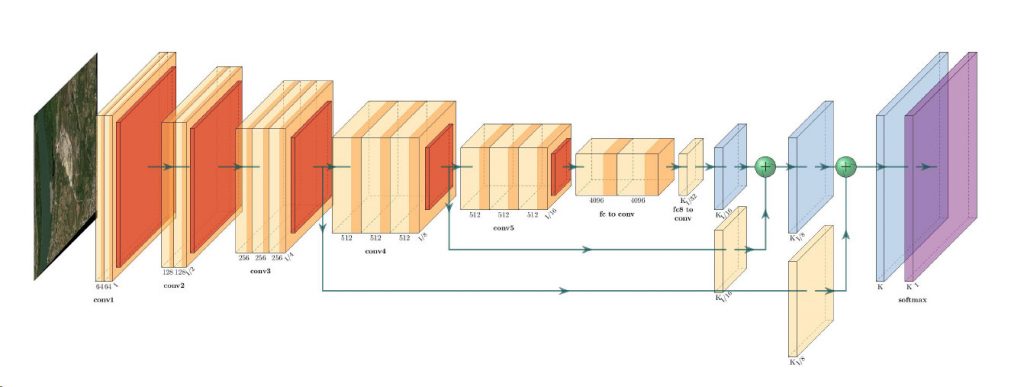Mapping Methane with VHR SWIR Imagery
- European Space Imaging
Methane is the second most important greenhouse gas and its concentration in the atmosphere is currently increasing at a rate of around 1% per year. Whilst not as prevalent in our atmosphere as carbon dioxide, methane gas emissions threaten a more severe impact on global warming. Therefore, monitoring and controlling industrial emissions – especially those from oil and gas – is vital to helping combat climate change. But how do we effectively monitor these gases that are both odourless and invisible to the human eye? The answer to this lies in the use of remote sensing and new findings suggests that utilisng very high resolution (VHR) multispectral satellite imagery can improve emission detection thresholds with greater accuracy.
WorldView-3 Ground-breaking Discovery
WorldView-3 data provided by European Space Imaging from the Maxar WorldView constellation, through the ESA third party mission program to the Land and Atmosphere Remote Sensing (LARS) group at the Universitat Politècnica de València (UPV), has led to a major breakthrough in how we can detect and map methane. Utilising short wave infrared (SWIR) images, the scientists were able to map methane plumes from various locations around Earth at a spatial resolution of up to 3.7 m. This discovery was the first of its kind and filled an important observational gap in the remote sensing of methane point emission. Positive plume detections were achieved in oil and gas extraction fields in Algeria and Turkmenistan, and in the Shanxi coal mining region in China.
“Detecting and fixing fugitive methane emissions from fossil fuel production activities worldwide has been identified as a key climate change mitigation strategy. Satellite observations are becoming an essential means for this endeavour”
Luis Guanter, Head of the LARS group at UPV’s Research Institute of Water and Environmental Engineering
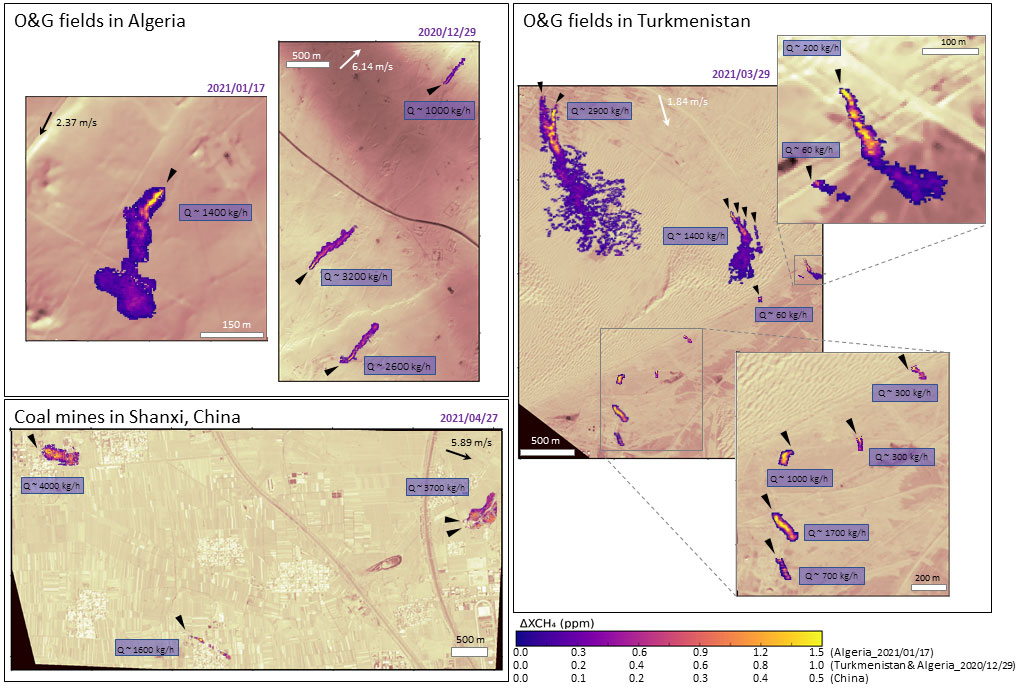
Sample methane plumes activities detected with WorldView-3 images.
Satellite Imagery supplied by European Space © Maxar Technologies / processed by Sánchez-García et al. (in prep.)
SWIR: An Important Complement
Previously, methane retrievals at such high resolution were only possible for airborne instruments, like the AVIRIS-NG spectrometer operated by NASA’s Jet Propulsion Laboratory. Therefore, WorldView-3’s SWIR images are an important complement to the current set of satellite missions capable of methane plume mapping, which share a spatial sampling in the 20-30 m range. The high spatial and temporal resolution of WorldView-3 SWIR observations are complemented with a high signal-to-noise ratio and a good spectral coverage of the strong methane absorption around 2300 nm, which make it a powerful mission for methane mapping.
“From now on, WorldView-3 will greatly contribute to this task, by enabling methane plume mapping at the highest spatial resolution of all available methane-sensitive satellite systems to date.”
Elena Sánchez-García, LARS group
Want to try SWIR Imagery for your project?
Learn more about SWIR and download free samples to see the quality for yourself and how it fits into your workflow.

Detailed view of methane plumes mapped WorldView-3 from a pipeline in the Turkmenistan oil and gas field at original 3.7 m SWIR sampling compared with that of a 30 m instrument.
Satellite Imagery supplied by European Space © Maxar Technologies / processed by Sánchez-García et al. (in prep.)
VHR Imagery Improves Methane Mapping
The ability to map methane emissions with VHR satellites with SWIR capabilities, such as WorldView-3, allow a substantial improvement of emission detection thresholds, as smaller emissions can be unveiled and more accurately located. It also enables a higher accuracy for quantifying emission rates and identifying which infrastructure elements are responsible for the emissions.
“As a long standing contributor to many ESA EO programs, I am thrilled that data directly supplied by European Space Imaging has led to such a fantastic breakthrough for the industry. Combating climate change is of vital importance to humanity and through technological innovations, we are now starting to see the power that satellite imagery has in solving this complex challenge.”
Adrian Zevenbergen, Managing Director of European Space Imaging
European Space Imaging has been supplying VHR satellite imagery to various ESA EO programs for many years. Since 2016, we have been supplying VHR data to the Third Party Mission scheme. Through this program ESA provides EO data from commercial suppliers to complement ESA EO missions and support and build up the scientific community in Europe. Accepted proposals can order products directly from European Space Imaging within the limit quote assigned by ESA. To learn more on how you can access free VHR data, visit https://www.euspaceimaging.com/open-access-data/
About LARS group:
The (LARS) group at UPV’s Research Institute of Water and Environmental Engineering (IIAMA) is led by Luis Guanter, who joined the UPV in March 2019 as a Full Professor. Besides Luis Guanter, LARS consists at the moment of Javier Gorroño as an ESA Living Planet Fellow, Elena Sánchez-García as a postdoctoral researcher, and Itziar Irakulis-Loitxate as a doctoral researcher.
Related Stories
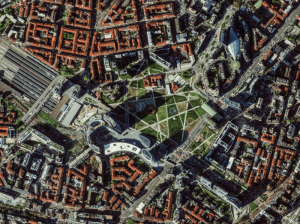
Europe’s Green and Digital Transformations with 25 Years of VHR Satellite Archive Data
Planning Europe’s future without knowing its past is impossible. The European Green Deal, Horizon Europe, the EU Biodiversity Strategy for 2030 and other policies all demand one thing: evidence. Not just today’s data, but years of history that show how our cities, forests, and coastlines have changed.
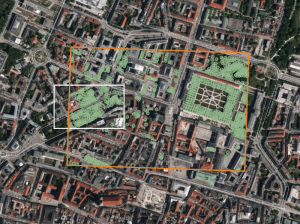
AI Uses 15 cm Satellite Images to Cut Costs and Increase Scalability in Forest Management and Urban Forestry
Forest managers across Europe face an impossible task: monitor millions of hectares with shrinking budgets while meeting increasingly strict EU environmental targets. But with the rise of AI and satellite technology, they now have new solutions at their disposal – smarter, cheaper, and more scalable – to monitor forest health, automate tree inventories, and plan sustainable logging. In this article, we introduce one of these solutions: an AI forestry algorithm developed by Arboair using 15 cm satellite data from EUSI.

GEOSeries: Extracting Insights From High Resolution SAR Imagery for Time-Sensitive Analysis
In this webinar, industry experts and advanced users of Umbra SAR data showcase how they transform SAR imagery into actionable insights in real-world mapping, monitoring and intelligence applications. See how NV5 and Umbra leverage ENVI SAR Essentials for advanced processing with time-efficient results, converting analytics into valuable intelligence.
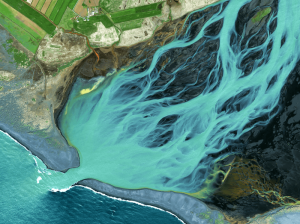
Using Satellite Imagery to Build Water Resilience Across Europe
Water across Europe is facing severe pressure. Climate change, urbanisation, agricultural demands and other sources of pollution are threatening water security and creating critical challenges that need to be addressed. We have to act quickly, build stronger systems and create sustainable water resilience practices – so that both natural ecosystems and human communities can thrive. Here is how satellite imagery from EUSI can help.


